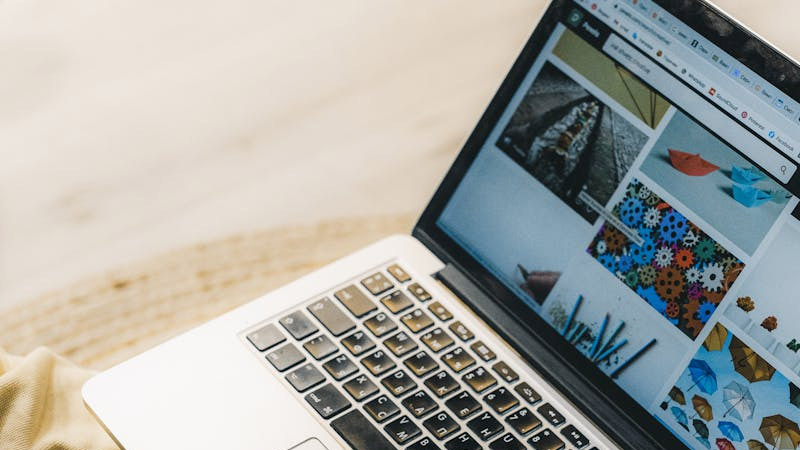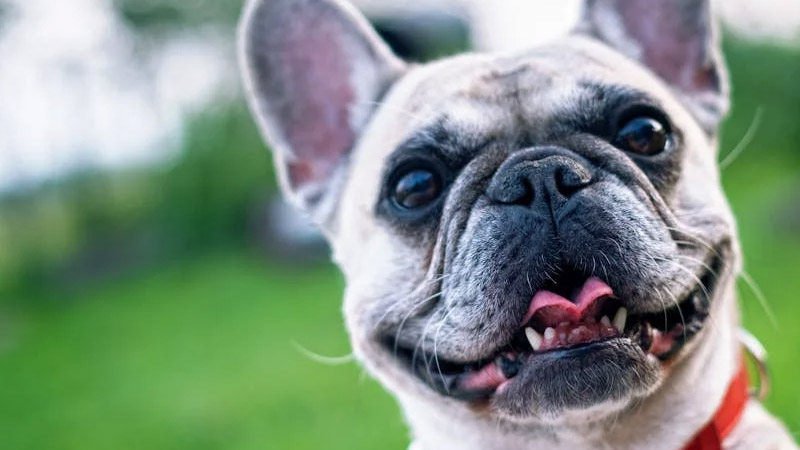- 首頁
- Blog
- What Are Common Web Design Layout Techniques? Adhering to the "Layout is King" Principle for a More Comfortable Layout
What Are Common Web Design Layout Techniques? Adhering to the "Layout is King" Principle for a More Comfortable Layout
2018 / 12 / 24
As is well known, an aesthetically pleasing layout design directly influences a website's character. This is especially true today, where websites have become a crucial channel for businesses to showcase their brand image, convey information, and attract customers. If a website's layout is overly monotonous or generic, it negatively impacts the user experience, ultimately hindering the goals of user engagement and conversion.
However, while adhering to the "Layout is King" principle is essential in web design practice, what kind of layout design actually appeals to users?
Web Design Q&A: Why is a Rational Layout Crucial in Web Design?

Layout plays a pivotal role in a website's visual communication. It not only conveys information clearly to the target audience but can also capture their attention through creative layout approaches.
A rational layout simplifies large amounts of information on a website into a format that is easy for the general public to understand and accept. This enhances the target audience's cognition and memory of the information, thereby guiding them to take the next step towards conversion.
Web Design Knowledge Share: A Review of Five Creative Website Layout Techniques

Dual-Tone Headlines
This technique uses text in two contrasting colors to emphasize key points in a headline, thereby attracting consumer attention and guiding them towards important information. Typically rendered in a large font size on the page, dual-tone headlines often employ contrasting colors, underlines, or italics to highlight the headline's focus and hierarchical structure. This effectively improves content readability and comprehensibility, aiding consumers in better understanding the page's organization and logic.
Irregular-Shape Layout
This involves arranging elements like text and images into non-standard shapes to break away from traditional layout conventions and create unique visual effects. Compared to traditional layouts, irregular-shape layouts enhance a design's uniqueness and creativity, making the website more personalized and interesting. Furthermore, this technique can reinforce hierarchical relationships between elements and enhance the interface's spatial perception through differently shaped and sized elements, making key information more noticeable and memorable for consumers.
Vertical Layout
Vertical layout arranges content or elements along the vertical axis in web design. Compared to horizontal layouts, it breaks the constraints of conventional rules, resulting in a freer and more personalized layout. Vertical layouts make better use of a webpage's vertical space, facilitating easier content comprehension and scanning for consumers. Note: Vertical layout is less suitable for large blocks of text; it is an excellent choice for headings or navigation design.
Interwoven Text and Image
This technique creates a sense of layering and three-dimensionality by varying the foreground/background positioning of images and text, resulting in partial overlapping or cutting effects. Applied in web design, it emphasizes visual focus on key elements and adds a dynamic quality to the design. Additionally, interweaving text and image can integrate page elements seamlessly, creating a strong visual impact and making key elements more prominent.
Text Overlay on Image
This involves overlaying text directly onto the main visual element, using the element as a background layer for the text. This centers the overall visual focus and creates a powerful visual impact. The benefit of text overlay is its ability to increase page design appeal and readability, thereby better capturing consumer attention. Using this layout technique in web design helps highlight crucial interface content, naturally directing the consumer's gaze towards it and deepening their impression.
Web Design Q&A: What Are Common Web Design Layout Techniques?

Technique 1: Enhance Contrast Between Elements
Generally, greater contrast makes specific elements and content more prominent. Conversely, insufficient contrast fails to highlight important website information and cannot leave a strong impression on users. Common contrast techniques include: light/dark contrast, size contrast, and weight (e.g., font boldness) contrast.
Technique 2: Ensure Adequate White Space
While filling an interface with various elements and content can make it lively, if mishandled, it not only fails to emphasize key content but can also make the entire interface appear cluttered. Therefore, ensuring sufficient white space between elements, while using other web design techniques to highlight important elements, prevents the website from appearing "empty" and simultaneously conveys an elegant impression.
Technique 3: Create a Distinct Rhythm
Web design is akin to musical composition, where various interface elements are the different notes in the music. These elements arranged in varying manners, sizes, and positions on the webpage are like notes combined in music with different pitches, rhythms, and melodies. For instance, using sharp-angled elements can create a percussive, short rhythm, generating a complex sense of urgency. Alternatively, employing soft, smooth curves can evoke the graceful and melodious rhythm of wind instruments.
Technique 4: Utilize Texture to Add Visual Weight
In web design, texture can significantly enrich a page's visual effect, making it appear more tactile than solid color blocks and providing users with a richer visual experience. Caution is advised: incorporating texture can increase the visual weight of the composition, potentially making users feel the site is heavy or complex during their visit. Therefore, balance the density and distribution of textures to avoid an overly heavy or chaotic page.
Technique 5: Incorporate a Specific Narrative
While web design might not offer the audiovisual impact of a film, a design with a compelling enough narrative can capture user attention and leave a lasting impression. Of course, the narrative needs to be architected by the designer based on their understanding, creating a story that resonates with users to evoke their emotions and enhance their memory of the website.
Layout design is not merely about piecing text and images together haphazardly, as this will only result in a cluttered composition. Only by adhering to specific layout design techniques can a layout achieve a greater sense of balance and rhythm.
Arachne Group Limited provides one-stop digital business solutions, including web design, online promotion, web hosting & management, system development, and other value-added services, comprehensively meeting clients' business needs. Feel free to contact us. Arachne Group Limited is your optimal partner for expanding online business opportunities.
Contact No.: 852-3749 9734
Email: info@hkweb.com.hk
Website: https://hkweb.com.hk
However, while adhering to the "Layout is King" principle is essential in web design practice, what kind of layout design actually appeals to users?
Web Design Q&A: Why is a Rational Layout Crucial in Web Design?

Layout plays a pivotal role in a website's visual communication. It not only conveys information clearly to the target audience but can also capture their attention through creative layout approaches.
A rational layout simplifies large amounts of information on a website into a format that is easy for the general public to understand and accept. This enhances the target audience's cognition and memory of the information, thereby guiding them to take the next step towards conversion.
Web Design Knowledge Share: A Review of Five Creative Website Layout Techniques

Dual-Tone Headlines
This technique uses text in two contrasting colors to emphasize key points in a headline, thereby attracting consumer attention and guiding them towards important information. Typically rendered in a large font size on the page, dual-tone headlines often employ contrasting colors, underlines, or italics to highlight the headline's focus and hierarchical structure. This effectively improves content readability and comprehensibility, aiding consumers in better understanding the page's organization and logic.
Irregular-Shape Layout
This involves arranging elements like text and images into non-standard shapes to break away from traditional layout conventions and create unique visual effects. Compared to traditional layouts, irregular-shape layouts enhance a design's uniqueness and creativity, making the website more personalized and interesting. Furthermore, this technique can reinforce hierarchical relationships between elements and enhance the interface's spatial perception through differently shaped and sized elements, making key information more noticeable and memorable for consumers.
Vertical Layout
Vertical layout arranges content or elements along the vertical axis in web design. Compared to horizontal layouts, it breaks the constraints of conventional rules, resulting in a freer and more personalized layout. Vertical layouts make better use of a webpage's vertical space, facilitating easier content comprehension and scanning for consumers. Note: Vertical layout is less suitable for large blocks of text; it is an excellent choice for headings or navigation design.
Interwoven Text and Image
This technique creates a sense of layering and three-dimensionality by varying the foreground/background positioning of images and text, resulting in partial overlapping or cutting effects. Applied in web design, it emphasizes visual focus on key elements and adds a dynamic quality to the design. Additionally, interweaving text and image can integrate page elements seamlessly, creating a strong visual impact and making key elements more prominent.
Text Overlay on Image
This involves overlaying text directly onto the main visual element, using the element as a background layer for the text. This centers the overall visual focus and creates a powerful visual impact. The benefit of text overlay is its ability to increase page design appeal and readability, thereby better capturing consumer attention. Using this layout technique in web design helps highlight crucial interface content, naturally directing the consumer's gaze towards it and deepening their impression.
Web Design Q&A: What Are Common Web Design Layout Techniques?

Technique 1: Enhance Contrast Between Elements
Generally, greater contrast makes specific elements and content more prominent. Conversely, insufficient contrast fails to highlight important website information and cannot leave a strong impression on users. Common contrast techniques include: light/dark contrast, size contrast, and weight (e.g., font boldness) contrast.
Technique 2: Ensure Adequate White Space
While filling an interface with various elements and content can make it lively, if mishandled, it not only fails to emphasize key content but can also make the entire interface appear cluttered. Therefore, ensuring sufficient white space between elements, while using other web design techniques to highlight important elements, prevents the website from appearing "empty" and simultaneously conveys an elegant impression.
Technique 3: Create a Distinct Rhythm
Web design is akin to musical composition, where various interface elements are the different notes in the music. These elements arranged in varying manners, sizes, and positions on the webpage are like notes combined in music with different pitches, rhythms, and melodies. For instance, using sharp-angled elements can create a percussive, short rhythm, generating a complex sense of urgency. Alternatively, employing soft, smooth curves can evoke the graceful and melodious rhythm of wind instruments.
Technique 4: Utilize Texture to Add Visual Weight
In web design, texture can significantly enrich a page's visual effect, making it appear more tactile than solid color blocks and providing users with a richer visual experience. Caution is advised: incorporating texture can increase the visual weight of the composition, potentially making users feel the site is heavy or complex during their visit. Therefore, balance the density and distribution of textures to avoid an overly heavy or chaotic page.
Technique 5: Incorporate a Specific Narrative
While web design might not offer the audiovisual impact of a film, a design with a compelling enough narrative can capture user attention and leave a lasting impression. Of course, the narrative needs to be architected by the designer based on their understanding, creating a story that resonates with users to evoke their emotions and enhance their memory of the website.
Layout design is not merely about piecing text and images together haphazardly, as this will only result in a cluttered composition. Only by adhering to specific layout design techniques can a layout achieve a greater sense of balance and rhythm.
Arachne Group Limited provides one-stop digital business solutions, including web design, online promotion, web hosting & management, system development, and other value-added services, comprehensively meeting clients' business needs. Feel free to contact us. Arachne Group Limited is your optimal partner for expanding online business opportunities.
Contact No.: 852-3749 9734
Email: info@hkweb.com.hk
Website: https://hkweb.com.hk
MORE BLOG
-
Web Development + Digital Marketing: Crafting Thanksgiving & Black Friday Campaigns That Drive Record Profits for Businesses
2025/11/21 As your professional partner in web development and digital marketing, Arachne Group Limited understands that a successful holiday campaign is far more than just offering "discounts." -
What Are Web Development and Web Design? The Two Pillars of Building Successful Web Solutions
2025/11/19 Transforming it into a functional, live website requires a series of complex conversion processes, including writing code, setting up databases, and building backend functionalities. -
How to Create a Pet Supplies E-commerce Website? Master 3 Web Design & 3 Online Promotion Strategies
2025/11/11 Mastering practical skills is the key to success! In this article, Arachne Group Limited will guide pet brand merchants step-by-step, helping you build an online shopping paradise where pet owners love to browse and are happy to make purchases.
















